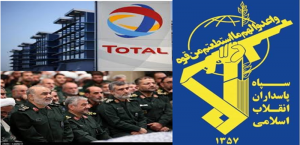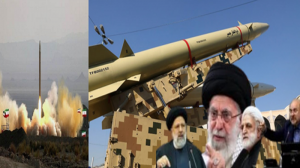(Video)The Untapped Potential of Iran’s Gas Reserves and the Economic Dilemma
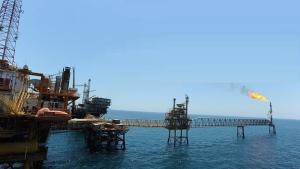
Iran boasts two gas fields,in north. When considering the reserves of these two fields, Iran actually claims the top spot globally in terms of gas reserves. But,due to the regime questionable agreements with Russia, Iranians are faceing with gas limitations.
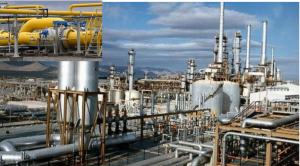
The geopolitical agreements, particularly the contentious contract with Russia, allocate 40% of the gas production to Russia, 28% to China, and only 25% to Iran. It is crucial that these figures pertain to a field that has been discovered but not yet operational.
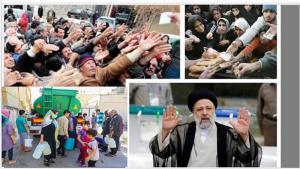
The World Bank’s report also indicates that due to the chronic budget deficit in Iran, there is no room left for investment. Observing this crisis, sidelined factions criticize the tightly vetted Raisi government as incompetent and a recipe for ultimate breakdown.
Companies like Total from France and Eni from Italy withdrew from agreements related to the Pars South gas field, try to invest in Qatar and Azerbaijan instead.
Notably, Iran boasts two significant gas fields, namely the Sardar Jangal field in the north and the Chalous field in the Caspian Sea. When considering the reserves of these two fields, Iran actually claims the top spot globally in terms of gas reserves. However, due to questionable and treacherous agreements with Russia, Iran currently faces limitations on exploiting the Sardar Jangal gas field.
The geopolitical agreements, particularly the contentious contract with Russia, allocate 40% of the gas production from the Chalous field to Russia, 28% to China, and only 25% to Iran. It is crucial to note that these figures pertain to a field that has been discovered but not yet operational.
According to estimates, the Sardar Jangal gas field alone holds approximately 50 trillion cubic feet of gas, more than ten times the Shah Deniz field in the Republic of Azerbaijan. Additionally, the Chalous gas field boasts a reserve of at least 3.3 trillion cubic meters, making it the tenth-largest gas reservoir globally.
Iran’s vast gas resources, when harnessed efficiently, could significantly enhance the country’s economic prospects. Currently, a substantial portion of the population struggles with poverty, with over half living below the poverty line. Leveraging the extraction and sale of gas could provide Iran with the means to improve the living standards of its citizens.
Regarding gas production, data from British Petroleum (BP) indicates that Iran produced approximately 260 billion cubic meters of gas annually until the end of 2022, making it the third-largest gas producer globally after the United States and Russia.
However, despite its substantial gas reserves, Iran’s share of global gas production last year was less than 6.5%. Furthermore, Iran’s share in global gas sales was a mere 1.5%, primarily exporting to Turkey and Iraq.
Addressing the paradox of Iran’s significant gas reserves coexisting with domestic shortages, especially during high-demand winter months, requires an examination of the regime’s detrimental policies.
The autocratic rule, coupled with oppression against the populace, has led to the departure of Iranian experts from the country. Simultaneously, the regime lacks the technological prowess required for the efficient extraction of gas, particularly in offshore fields.
One such example is the Pars South gas field, one of the world’s largest, shared between Iran and Qatar. While Qatar efficiently exploits this field, becoming a major global exporter, Iran faces challenges due to Western sanctions and the absence of significant investments from major Western companies.
Notably, companies like Total from France and Eni from Italy withdrew from agreements related to the Pars South gas field, opting to invest in Qatar and Azerbaijan instead.
Estimates suggest that Iran requires a minimum investment of $60 billion over the next decade to address the inefficiencies in its gas sector. Failure to secure this investment could lead to an annual deficit of 400 million cubic meters, exacerbating the current situation where the regime resorts to burning Mazut for power generation, causing environmental pollution and health hazards.
Recently, Hashem Aruee, the head of Iran’s Energy Associations Union, warned that without necessary investments in the Pars South gas field, Iran would lose one field phase annually, starting from 2025.
This dire prediction carries severe economic consequences, threatening Iran’s economy and providing a cautionary tale to those who aligned themselves with Russia and China. The current regime, already teetering on the brink of bankruptcy, lacks the financial capacity for such investments.
In conclusion, the potential of Iran’s vast gas reserves remains largely untapped, primarily due to the regime’s mismanagement, corruption, and international isolation.
The dire consequences of this mismanagement include domestic shortages, environmental pollution, and a bleak economic outlook. Only with a change in leadership and a renewed commitment to international collaboration can Iran harness its gas potential and transition into a major global gas exporter, benefiting its people and the broader economy.
however, Corruption in Iran, has taken unconventional and extensive forms. Faced with a lack of political legitimacy and diminishing social support by the end of the Iran-Iraq War, the clerical dictatorship sought to secure its survival by involving the Islamic Revolutionary Guard Corps (IRGC), a pivotal force for the regime, in the country’s economy.
Now and then, tightly state-controlled media reports suggest questionable practices, such as awarding contracts at inflated prices, with the regime diverting the surplus funds for its gain.
The repercussions have been severe, resulting in a substantial drain on the nation’s resources that could have otherwise been allocated to improving the quality of life for ordinary Iranians.
One notable example was the contract between the National Iranian Oil Company and Crescent Petroleum, an Emirati company, in 2001. Mehdi Hashemi Rafsanjani, the son of the former regime president Akbar Hashemi Rafsanjani, allegedly received a $120 million bribe to facilitate the deal.
As a result, Iran’s regime reportedly incurred a $56 billion loss in its dealings with Crescent, according to Alireza Zakani, the head of the parliamentary committee overseeing oil contracts in 2013.
In a separate incident reported by the state-run Mashregh News in December 2015, Mehdi Hashemi Rafsanjani was found guilty of taking an $11 million bribe in connection to a petroleum contract involving Statoil and the Fuel Consumption Optimization Organization. The narrative further reveals that Statoil incurred a $3 million fine in Norway for its involvement in bribery payments.
In 2018, the IRGC-run Mashregh News also reported another $104 million bribery case involving French oil company Total and Iranian Ministry of Petroleum officials under the leadership of Bijan Zanganeh during the years 1995 to 2004.
This bribery was linked to the allocation of phases 2 and 3 of the South Pars oil field to Total. Reuters announced that a court in Paris condemned Total to pay $570,000 for bribery. Reuters further states that court documents indicate Mehdi Hashemi Rafsanjani as one of the beneficiaries of this bribe.
On December 24, citing the huge discounts the clerical regime offers its clients, the Etemad newspaper wrote, “A significant portion of this ‘export leap’ is owed to the ‘oil and gas’ sector.
In fact, with the rise in oil sales, largely facilitated by significant ‘discounts,’ the primary and substantial role in economic growth in the first half of this year has been attributed to the oil and gas sector.”
Despite the regime’s depletion of the country’s resources, the costs associated with its terrorist agenda remain exorbitant. Tehran continues to struggle to cover expenses related to military endeavors, missile production, proxy forces, and satisfying the insatiable appetites of the ruling elites.
This situation imposes astronomical budget deficits on the people, leading to inflation, soaring food prices, and increased housing rent.
The World Bank’s report also indicates that due to the chronic budget deficit in Iran, which has reached about 30% of the total budget, there is no room left for investment. Observing this crisis, sidelined factions criticize the tightly vetted Raisi government as incompetent and a recipe for ultimate breakdown.
To subscribe weekly Newsletter of NCRI, please use this link. https://bit.ly/3SMgEla
Shahin Gobadi
NCRI
+33 6 61 65 32 31
email us here
On Dec. 24, the clerical regime offers its clients, the Etemad newspaper wrote, “A significant portion of this ‘export is owed to the ‘oil and gas’ sector.
Legal Disclaimer:
EIN Presswire provides this news content "as is" without warranty of any kind. We do not accept any responsibility or liability for the accuracy, content, images, videos, licenses, completeness, legality, or reliability of the information contained in this article. If you have any complaints or copyright issues related to this article, kindly contact the author above.

